Enterovirus D68 3C protease large scale purification protocol
Korvus Wang, michael fairhead, Eleanor Williams
Disclaimer
Research was supported in part by NIAID of the U.S National Institutes of Health under award number U19AI171399. The content is solely the responsibility of the authors and does not necessarily represent the official views of the National Institutes of Health.
Abstract
This protocol details the expression and purification of enterovirus D68 3C protease construct bearing a C-terminal His-tag at large scale (>6L)
Attachments
Steps
Abbreviations
CV - column volume, total volume of resin in a column
IMAC - immobilised metal affinity chromatography
Plasmid Transformation
Transform the D68EV3C construct (Addgene plasmid #204817) into BL21(DE3) and store a glycerol stock of this at -80°C
Protein expression
See (Nathan's protocol DOI) for D68EV3C large scale expression protocol
Protein Purifcation
Lyse cell pellet
Thaw and resuspend the pellet in ~8mL of lysis buffer per g of pellet. Stir gently with magnetic stir bar at Room temperature for 0h 30m 0s to allow lysozyme and bezonase to start breaking down
cell components.
Lyse cells by sonication 0h 0m 4s 0h 0m 12s for a total 'on' time of 0h 7m 0s at 50% amplitude to fully rupture the cells. Ensure pellet is °C during sonication to prevent overheating.
Centrifuge the lysed cells 38000x g,4°C to remove insoluble cell debris, and collect the supernatant in a bottle 4°C
Perform IMAC to extract target protein from the lysed cell mixture
Dispense 30mL Nickle affinity resin (Ni Sepharose 6 FF, Cytiva) into a gravity flow column.
Wash the resin first with ~ 20CV distilled water to remove the storage solution and then ~ 20CV binding buffer to equilibrate
Resuspend the equilibrated resin with some binding buffer and add to the supernatant bottle. Incubate the resin with the supernatant for 0h 30m 0s while rotating or otherwise mixing gently at 4°C
Load the resin/supernatant mix back onto the gravity flow column, retaining the flow through separately for SDS-PAGE analysis.
Wash the column with 10CV of wash buffer 1, then 10CV wash buffer 2. Allow wash buffer to pass through completely between washes. This is to remove non-specific, weak binding of contaminant proteins from the resin for a cleaner elution.
Collect washes separately for SDS-PAGE analysis.
Elute the protein with 1CV of elution buffer.
Repeat step 5.5 a further 2 times, collecting a total of 3 separate elution fractions. This is to ensure maximum retrieval of protein from the resin.
Measured the A280 values of the elution fractions to estimate the protein content
For example:
E1: A280=1.16
E2: A280=6.22
E3: A280=3.24
Run SDS-PAGE of all samples from total lysis supernatant to final elution. Stain gel with Coomasssie Blue and determine which fractions contain the target protein by finding the band corresponding to the target molecular weight, 21.3 kDa.
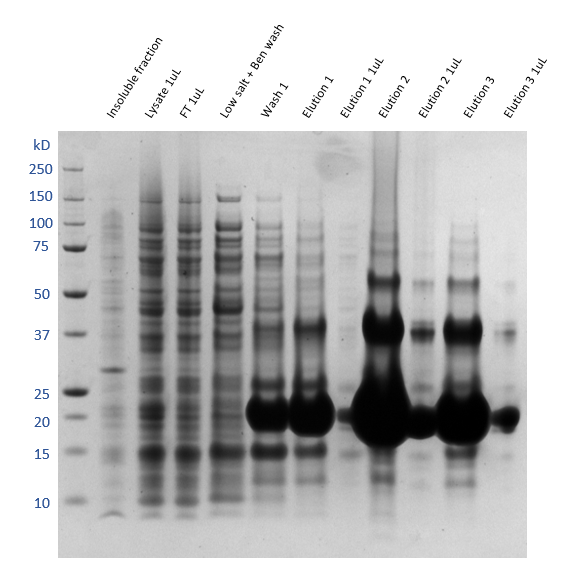
Purify sample further by size exclusion chromatography.
Pool and dilute the elutions with base buffer to reduce the sample imidazole concentration to 100millimolar (mM) .
Concentrate the diluted sample with Vivaspin 50 (10kDa MWCO) tangential flow concentrators connected to a peristaltic pump, to a final volume of under 30mL .
Remove any solid aggregates from the sample by centrifugation at 20000x g,4°C , then immediately draw up the supernatant with a 50mL syringe and a blunt-tip fill needle, taking care not to disturb the pellet.
Using the AKTA Pure system:
Sample injected onto 50mL Superloop (Cytiva) through a 0.2uM syringe filter to further remove any aggregates in the sample.
Run the sample down XK 50/100 Superdex 200 pg gel filtration column at 6mL/min in gel filtration buffer, collecting 35mL aliquots in 50mL falcon tubes. Collection started after 0.4CV into elution, as the fraction collector can only hold 6x6 falcon tubes. Fraction collection parameters can be adjusted to individual FPLC system specs.
The column should be pre-equilibrated in SEC buffer.
Run the peak SEC fractions on SDS PAGE to assess purity.
For example:
Below two SEC runs were carried out due to large volume of sample.
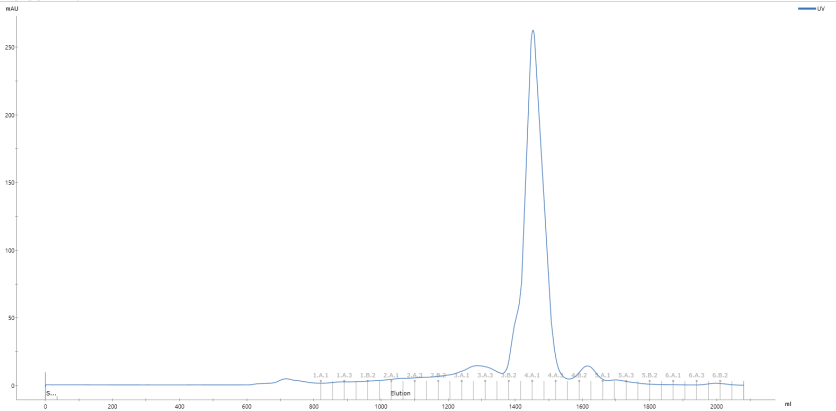
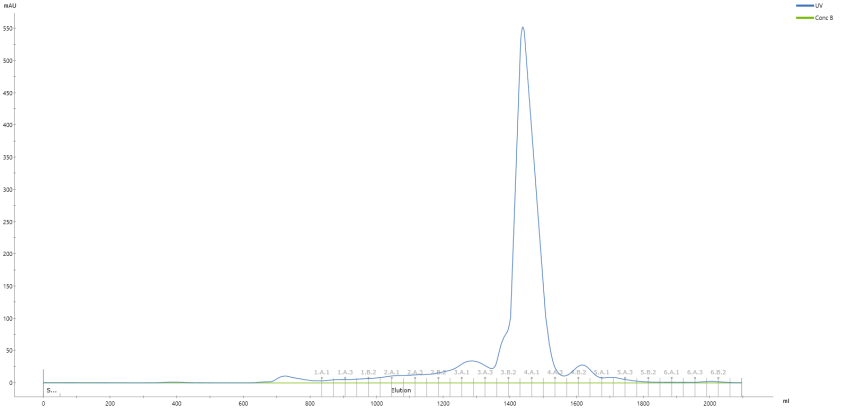
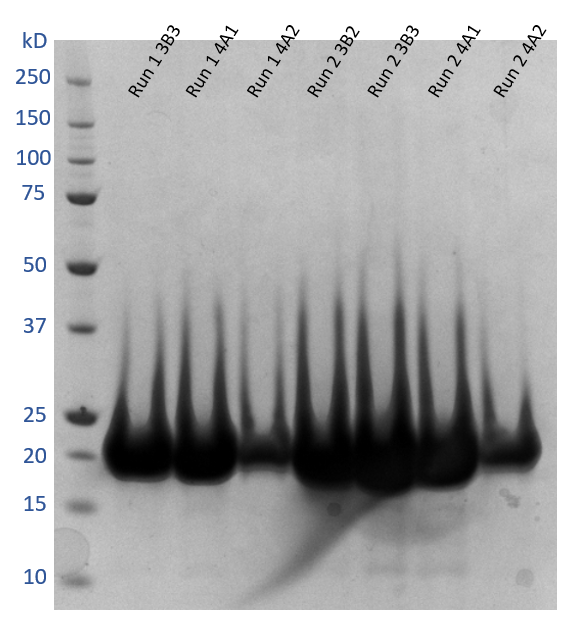
Take the fractions that contain the cleanest target protein and concentrate to21mg/mL using a 10 kDa MWCO centrifugal concentrator.
Take 1µL of the final sample for SDS-PAGE, and another for mass spectroscopy.
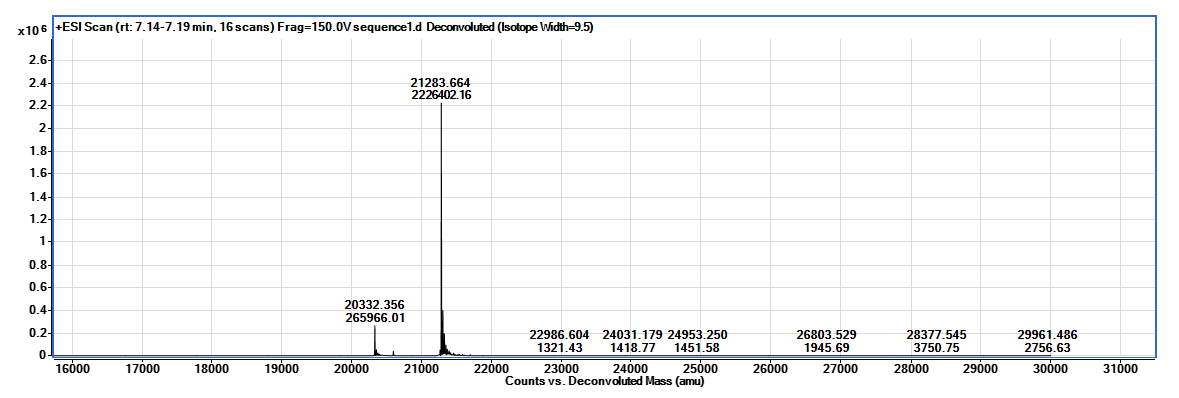
Aliquot into appropriate volumes for future usage to minimise freeze/thaw cycles. Flash-freeze in liquid nitrogen, and store at -80°C until required.
For example:
The final yield from processing 243 g of cell pellet was 543 mg of pure D68 EV 3C protease

